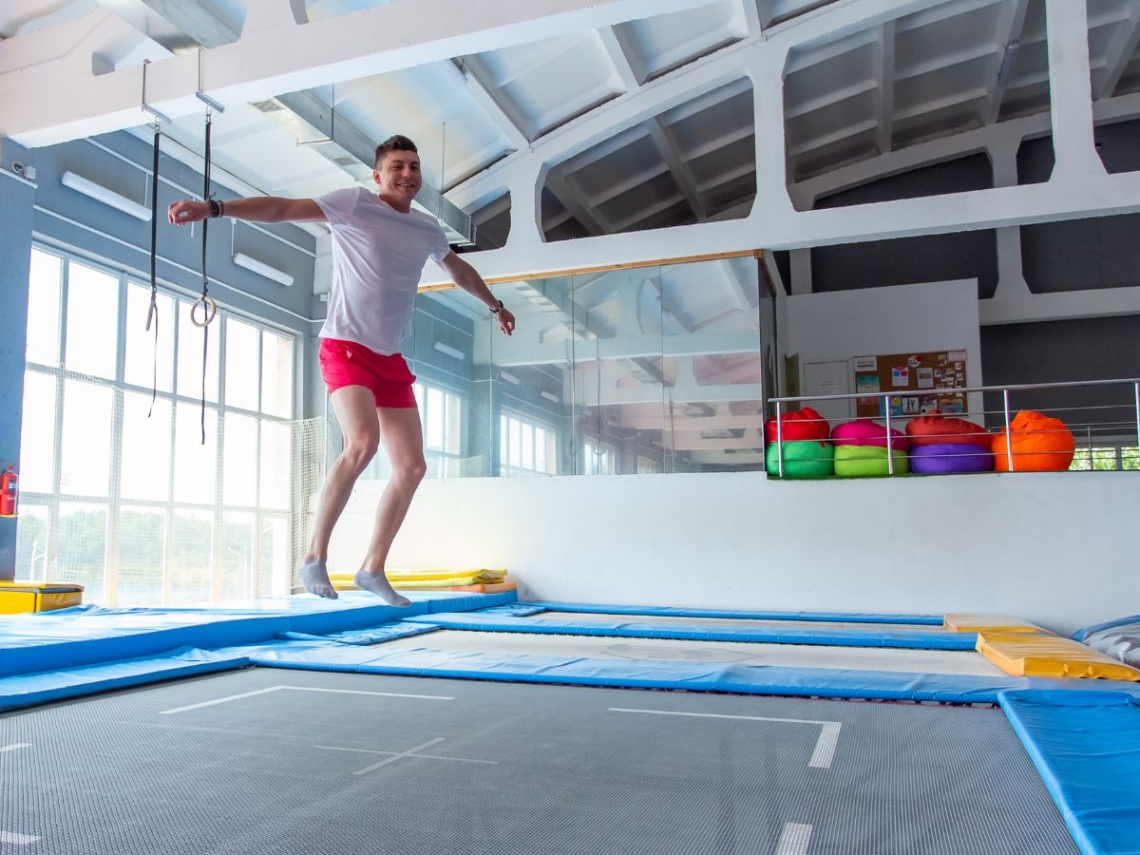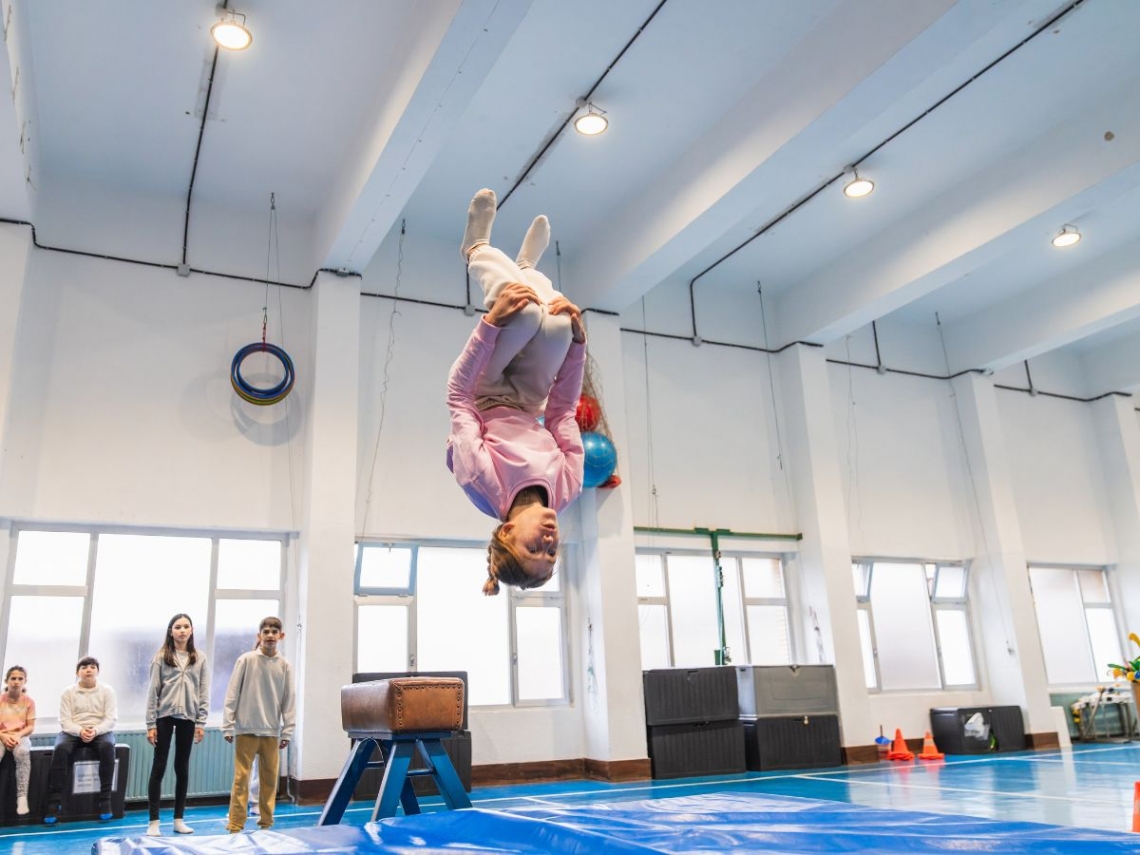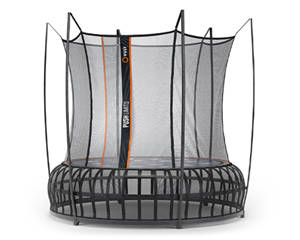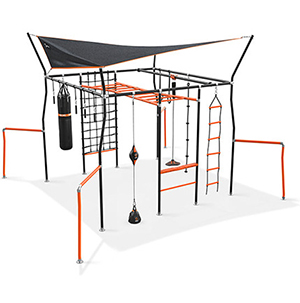
Trampolining, also known as trampoline gymnastics, has also soared onto the grandest athletic stage in the world: the Olympics.
Trampolining is every bit an Olympic sport and is officially known as “Trampoline Gymnastics.” Let’s jump right into the history of how it gained that status, the rules, what the athletes do, and even the exciting spin-offs like synchronised trampoline.
How Did Trampoline Gymnastics become an Olympic Sport?
Trampolining’s Olympic journey into the spotlight began way back in the 1960s, with demonstrations and exhibitions in competitions around the globe. The World Championships was held in London in 1964, which was the first officially recognized global competition for trampolining.
However, it truly rose to prominence in the late 1990s when the International Gymnastics Federation (FIG) officially recognised Trampoline Gymnastics as a competitive discipline in 1999. Just a year later, at the 2000 Sydney Olympic Games, trampolining finally made its official debut as a full medal sport. Trampoline gymnastics is fully recognised in the Olympic canon and reigns as one of the three official gymnastics disciplines in the Games, alongside artistic and rhythmic gymnastics.
In terms of rules and scoring, each athlete performs two routines on a trampoline: a compulsory routine with required skills plus a voluntary routine showcasing their most complex skills. Each routine lasts approximately 50 seconds. Judges award points based on:
- Difficulty: Are there multiple somersaults and twists?
- Execution: Are the movements precise, controlled, and stable?
- Time of flight: How high are the athletes leaping?
- Horizontal displacement: Do they land near the centre?
Competitors must execute eight to ten consecutive skills with breathtaking form, all while maintaining control and consistency. There’s no doubt that it takes true athleticism, artistry and nerve to complete these impressive routines.

What Types of Events Are Involved and What Do Athletes Do?
At the Olympics, there is one event per gender: men’s individual and women’s individual trampoline. Each comprises a qualification round followed by the finals. The top eight from the qualifications stage advance to compete again, with final rankings determined by the combined scores of their voluntary routines.
What do athletes actually do? Picture this: a gymnast bounds on the trampoline, gathering height with each leap. They catapult into aerial flips and twists (think double somersaults with a full twist, triple somersaults, layouts, piked somersaults and more). Judges scrutinise each move, counting perfect body shape, pinpoint landings and consistent rhythm. It’s breathtaking, bold and poetic all at once.
Is Synchronised Trampoline an Olympic Sport?
Who doesn’t love watching performances that are perfectly in-sync? Synchronised trampoline is a thrilling event where two gymnasts perform the same routine in perfect unison on side-by-side trampolines. It takes impeccable timing, coordination, and communication to pull this off.
It was recognised internationally by the International Gymnastics Federation (FIG) in the 1990s. While it’s a highly respected discipline in international trampoline gymnastics, synchronised trampoline is actually not part of the Olympic Games, as the latter has only ever included individual trampoline.
But that doesn’t mean it isn’t shining bright as a sport! In fact, it was featured at the 2001 Goodwill Games and remains a main event in world-level competitions. Athletes with an interest in sync trampoline can instead focus on the World Games, a major international event for non-Olympic sports. It also takes centre stage at the FIG Trampoline Gymnastics World Championships and other elite global competitions.
Sure, Olympic glory may still be reserved for individual trampoline events for now, but synchronised trampoline has its own prestigious stage where it stands tall. And its athletes are no less spectacular.

Trampoline Olympics Fun Facts
- Each Olympic trampoline follows precise measures of 5 metres by 3 metres, suspended 1.8 metres above the floor.
- Gymnasts launch up to 10 metres in the air during routines. That’s about the height of a three-storey building.
- Athletes must land within a 10-cm diameter circle at the centre to earn a full horizontal score.
- At the lowest point of a bounce, trampoline athletes can experience forces up to three times their body weight or 3g, similar to what astronauts feel during a rocket launch.
- The Olympic scoring system has evolved over time. One major update is the inclusion of 'time of flight,' which measures how long an athlete stays in the air. The longer they’re airborne, the higher their score is. This addition rewards athletes for jumping higher without penalising them for style or difficulty.
- China dominated the first Olympic trampoline finals in Sydney 2000, winning gold in both the men's and women's events. Since then, China has continued to take the lead in the sport, earning the most Olympic trampoline medals among all countries to date.
Jump Closer to Your Olympic Dreams with Vuly
Trampoline Gymnastics is a disciplined, powerful blend of precise aerial skill, breathtaking heights, and artistic execution. There’s no doubt that it deserves the global spotlight it’s in.
Dreaming of writing your own story of Olympic greatness one day? You’ll need the perfect training partner. While Vuly doesn’t produce official Olympic trampolines, our premium trampolines deliver the quality, rebound performance and durability that all serious athletes look for. With dependable bounce, premium safety features, and professional-grade frames, Vuly trampolines are the perfect tool to elevate your training regime on your journey toward Olympic ambition.
From the Flare and Ultra 2 Pro to the Thunder 2 Pro, view our full collection today.
Explore our other blogs:






















































